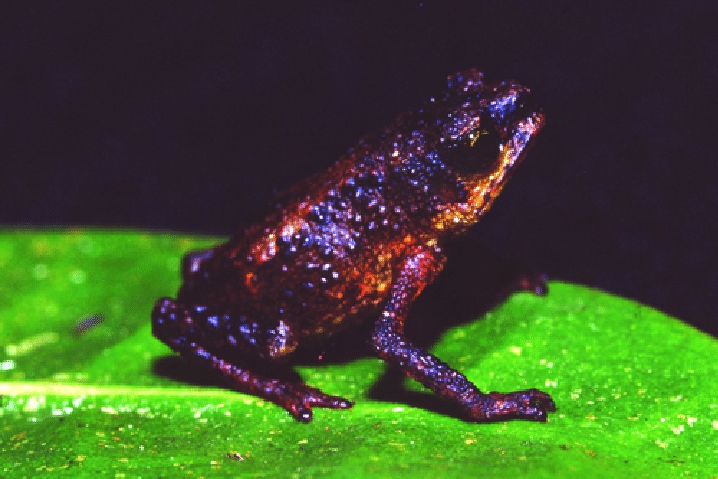| Citation |
IUCN SSC Amphibian Specialist Group 2018. Pelophryne linanitensis. The IUCN Red List of Threatened Species 2018: e.T159223A123694365. http://dx.doi.org/10.2305/IUCN.UK.2018-2.RLTS.T159223A123694365.en. Downloaded on 07 May 2019. |
Description |
Geographic Range
NATIVE
Extant (resident)
Malaysia (Sarawak)
NUMBER OF LOCATIONS
1
UPPER ELEVATION LIMIT
2,250 metres
LOWER ELEVATION LIMIT
2,250 metres
Geographic Range in detail
Population
CURRENT POPULATION TREND
Decreasing
NUMBER OF MATURE INDIVIDUALS
POPULATION SEVERELY FRAGMENTED
CONTINUING DECLINE OF MATURE INDIVIDUALS
Population in detail
Habitat and Ecology
SYSTEM
Terrestrial
HABITAT TYPE
Forest
GENERATION LENGTH (YEARS)
CONGREGATORY
MOVEMENT PATTERNS
Not a Migrant
CONTINUING DECLINE IN AREA, EXTENT AND/OR QUALITY OF HABITAT
Yes
Habitat and Ecology in detail
HABITAT AND ECOLOGY
This species occurs in rhododendron forests, and is associated with Nepenthes and other fleshy plants (I. Das pers. comm. March 2018). Individuals have been found at night, up to 15 cm above the forest substrate, at the edge of forest trails on exposed, wind-swept slopes. Males have been observed calling from leaves near the ground (Inger et al. 2017). The tadpole is unknown, but the species is suspected to breed in pitchers of Nepenthes plants (Das 2008).
CLASSIFICATION SCHEME
Habitats Suitability Major importance
1. Forest 1.9. Forest - Subtropical/Tropical Moist Montane Suitable Yes
Threats
Biological resource use
Logging & wood harvesting
Climate change & severe weather
Habitat shifting & alteration
Threats in detail
THREATS
Even though its type locality is within the recently gazetted Pulong Tau National Park, it is subject to subsistence logging (I. Das pers. comm. March 2018). The habitat in Pulong Tau National Park faces encroachment from logging companies, as it has only been recently gazetted (in the last 2-3 years) and there is no current infrastructure or field staff in place, so it is not well protected at present (I. Das pers. comm. March 2018). Clear-felling and large-scale logging concessions are also happening within parts of the national park, although the type locality of this species lies just outside the range of commercial hardwoods (I. Das pers. comm. 2009). Climate change is likely to be a future threat (I. Das pers. comm. March 2018). |

